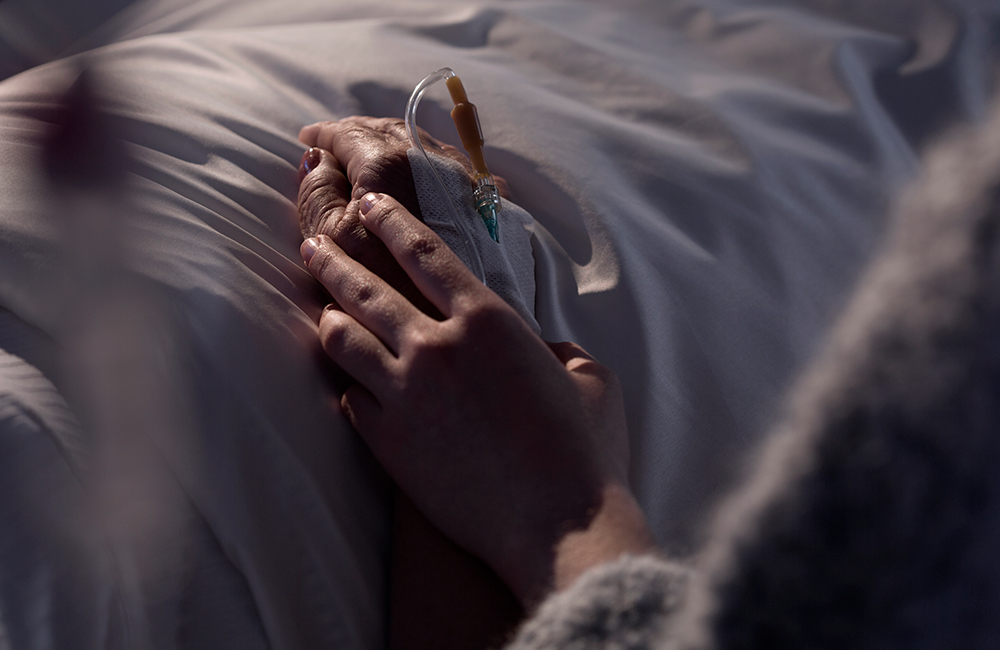
Modern medicine can improve health and extend life. This is often the desired outcome and beneficial to the patient. However, in some instances patients dying of terminal illness find the dying process extended and unbearable.[1] Suffering may arise from an array of distressing symptoms, often cumulative, including pain, breathlessness, extreme fatigue, constant nausea, odiferous wounds that do not heal, distressing edema, inability to engage in meaningful ways with loved ones, inexorable and progressive loss of bodily function and integrity. Palliative care, including as provided by hospice, can do much to mitigate symptoms. However, even with excellent palliative care some patients conclude that a swifter dying process is preferable. These patients deserve the autonomy to choose how much suffering to endure before death. Thus, it is essential that “A New Vision of Health” include a new vision of dying. This vision would empower mentally competent, terminally ill patients with more options at end of life, including the option of choosing a more peaceful death through aid in dying. Aid in dying (AID) refers to the medical practice where a physician prescribes medication to a mentally competent, terminally ill patient that can be ingested to achieve a peaceful death.
The Current State of Aid in Dying Across the United States
The option of aid in dying is not yet available in every state. Five states have passed legislation that allows a patient to choose aid in dying, including Oregon, Washington, Vermont, California and Colorado.[2] The District of Columbia also approved this option. In Montana, a decision of the Montana Supreme Court holds that the choice of aid in dying is consistent with the policy of the State to empower patients with autonomy over medical decisions. Accordingly, no prosecution of a physician for providing aid in dying would be viable.[3] Montana is currently the only state in which AID is practiced without enabling legislation. In the view of this author, the approach in Montana is the desired approach, as it leaves the practice to governance by standard of care, which is the normal way medicine is practiced.[4]
States with AID legislation impose rigorous requirements for a patient to qualify for and receive AID, including establishment of the patient’s terminal status (typically life expectancy of six months or less) and mental competence by an attending and consulting physician, written and oral requests from the patient, a mandatory waiting period between requests and issuance of the prescription, among others.
In many other states, laws prohibiting “assisting suicide” exist, and the assumption that these apply to physicians providing aid in dying prevents physicians from doing so. The assumption is flawed, as the choice of a dying patient for a peaceful death is starkly different from suicide: A terminally ill patient’s death is being precipitated by underlying disease. The option for a terminally ill patient to ingest medication to achieve a peaceful death, and avoid a prolonged dying process with unbearable suffering, is obviously different from “suicide”, where a life that could continue is cut short usually due to a mental health impairment or transitory personal crisis. A patient who seeks AID does not want to die; they want to live. However, the terminal illness will soon take their life. The patient wishes to cross the threshold to death with dignity intact and without prolonged suffering. AID gives a terminally ill patient the option for a more dignified, peaceful death. Nonetheless, for physicians to feel safe offering aid in dying to their patients, it appears continued advocacy to establish that aid in dying is permissible will be necessary either through legislative enactment of permissive statutes or through court cases that establish access, such as occurred in Montana.
Oregon has the longest experience with an open practice of aid in dying – 20 years of reported data about the practice. Many articles published in medical and legal journals discuss the data and its implications. Observers have noted that “none of the problems speculated about by opponents have presented.” [5] Indeed, rather than posing a risk to patients or medical profession, the open availability of aid in dying has galvanized significant improvements in care of terminally ill. Physicians report that since aid in dying has been openly available, they have worked hard to improve end-of-life care, taking educational courses on how to treat pain in the terminally ill, how to recognize depression and other psychiatric disorders, and more frequently referring patients to hospice.[6]
Conclusion
The way an individual crosses the threshold to death is a profoundly personal and private matter. For some individuals, particularly those who have exercised considerable control and autonomy throughout their lives, choosing a more peaceful death through aid in dying allows them to preserve a sense of coherence across the span of their life, which can be enormously important. As eloquently noted by legal scholar and philosopher Ronald Dworkin:
We live our whole lives in the shadow of death; we die in the shadow of our whole lives. . . . we worry about the effect of life’s last stage on the character of life as a whole, as we might worry about the effect of a play’s last scene or a poem’s last stanza on the entire creative work.[7]
A “new vision of health” demands a new vision of a “healthy death,” one which allows the patient to choose a more peaceful death.
To learn more, listen to Tucker speak about California’s End-of-Life Options Act (EOLOA) at
https://www.youtube.com/watch?v=uUFNpIzeFYs and Aid-in-Dying Legislation at https://www.youtube.com/watch?v=dyXjMT_YUtI.
References:.
- The phenomenon of protracted dying is a modern creation: “For all but our most recent history, dying was typically a brief process . . . These days, swift catastrophic illness is the exception; for most people, death comes only after long medical struggle with an incurable condition.” A. Gwande, The New Yorker, Annals of Medicine, “Letting Go: What should medicine do when it can’t save your life?” (August 2, 2010).
- Oregon’s statute, upon which the others have been modeled, can be found at: Oregon Death with Dignity Act, OR. REV. STAT. § 127.805 (2.01) (2016).
- Baxter v. State, 224 P.3d 1211 (Mont. 2009).
- For a discussion of this approach see Kathryn L. Tucker, “Aid in Dying: Guidance for an Emerging End-of-Life Practice,” CHEST Journal, vol. 142, no. 1, pp 218–224 (2012).
- Medical Futility Blog, Monday, Feb. 6, 2017; See, e.g., Andrew I. Batavia, So Far So Good: Observations on the First Year of Oregon’s Death with Dignity Act, 6 PSYCH. PUB. POL’Y & L. 291, 293 (2000); Margaret P. Battin et al., Legal Physician- Assisted Dying in Oregon and the Netherlands: Evidence Concerning the Impact on Patients in “Vulnerable” Groups, 33 J. MED. ETHICS 591, 593–95 (2007); Arthur E. Chin et al., Legalized Physician- Assisted Suicide in Oregon—The First Year’s Experience, 340 NEW ENG. J. MED. 577, 578 (1999); David Orentlicher, The Implementation of Oregon’s Death with Dignity Act: Reassuring, but More Data Are Needed, 6 PSYCH. PUB. POL’Y & L. 489, 491, 497–98 (2000) (reporting that implementation of Oregon law has so far been limited to terminally ill patients with a clear, persistent and voluntary request for hastened death); Christine K. Cassel & Timothy E. Quill, Professional Organizations’ Position Statements on Physician-Assisted Suicide: A Case for Studied Neutrality, 138 ANNALS INTERNAL MED. 208, 209 (2003); Joseph B. Straton, Physician Assistance with Dying: Reframing the Debate; Restricting Access, 15 TEMP. POL. & C.R. L. REV. 475, 479 (2006); Amy D. Sullivan et al., Legalized Physician- Assisted Suicide in Oregon—The Second Year, 342 NEW ENG. J. MED. 598, 598–99 (2000).
- Lawrence J. Schneiderman, Physician-Assisted Dying, 293 J. AM. MED. ASS’N 501 (2005) (“Indeed, one of the unexpected yet undeniable consequences of permitting physician aid in dying is that ‘many important and measurable improvements in end-of-life care’ occurred following the Act’s implementation. Rather than becoming the brutal abattoir for hapless patients that some critics predicted, the state is a leader in providing excellent and compassionate palliative care.”).
- Ronald Dworkin, Life’s Dominion.


